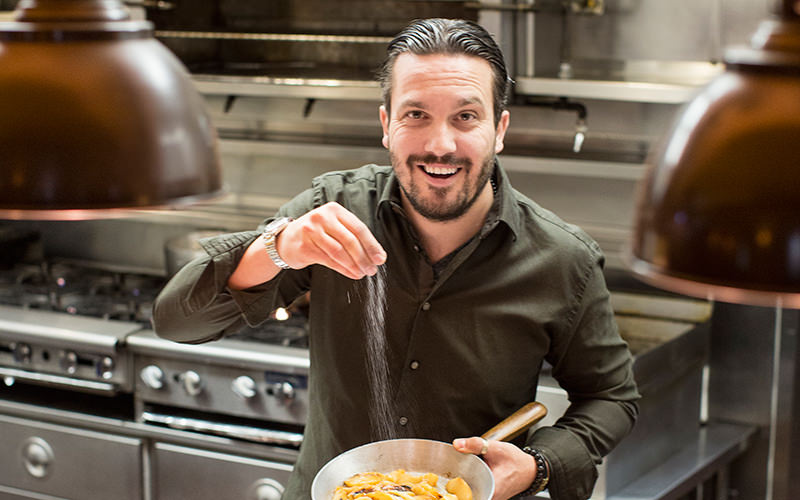Unlike many “celebrity” winemakers, the wine business is nothing new to chef Fabio Viviani. You may recognize the well-established chef from his appearances on Top Chef, his work as a restaurateur, or from The New York Times bestseller list for Fabio’s Italian Kitchen.
Viviani truly started from the bottom. From humble beginnings as a kid making wine for his grandfather in Italy, to owning five restaurants in Florence by the time he was 27, Fabio has always been on the fast track to becoming a culinary sensation. He currently operates 10 restaurants throughout the U.S. and launched his eponymous brand of wine in December of 2014 with the dream of bringing Italian wine culture to the United States.
We recently spoke with Fabio about his experience in the restaurant industry, the difference between American and Italian wine culture, and what he really thinks about rosé.
How did you begin making wine?
Well, let me start by saying that by no means am I a wine-maker. I grew up in the wine business because I have owned and operated my own restaurant since I was 18 years old, though I began drinking wine much earlier than that. My knowledge of wine as a consumer, seller, and as a producer, comes from my restaurant experience and my passion for dining. I also come from a region where drinking wine is meant to be fun, and it’s not expensive to find good wine.
Right. So what is your opinion on the difference between Italian and American wine culture?
America is afraid of wine. America thinks that wine is probably a more complicated matter than it really is, when at the end of the day, wine is nothing more than alcoholic fruit juice. I think that the relationship with Italians and wine is much easier and much more approachable than with Americans.
What are your favorite summer recipes and pairings?
Whatever goes together grows together! Meaning that we like to pair something a little bolder with red wine. With white wine, something a little lighter. If we have a red blend we will probably pair it with something spicy. If we have a white blend, we may pair it with something sweet. I have lots of pairing ideas to share from my website.
What do you think about rosé?
Well, rosé is a commercial wine. I don’t love it, but there are some brands that I will seek over others. We are planning to do a rosé wine later on next year, but it’s really just a commercial line. It’s not a direction many winemakers are proud to go in, although there is some good rosé out there.
How many restaurants do you currently own?
We have 10 restaurants in total throughout Los Angeles, Chicago, and San Diego.
That must be a lot to manage.
Yes, well I’m always in the kitchen, but I’m never in the same one for more than three days in a row. Most of the days I’m in Chicago, so my Chicago restaurants get the most attention, but my L.A. restaurants are a bit older so they’re easier to manage because we’re used to it. I go to L.A. to cook at least once a month.
Do you host dinner parties at your own home?
Not really, because I host a dinner party every night for thousands of people. So, when I’m home I like to be alone with just my wife and the dogs. If I’m not cooking in the restaurant, I’m either at someone else’s dinner party or I’m cooking solo.
Is your wife a good cook too?
She doesn’t cook. I mean, would you want to cook for me? C’mon.
Can’t say I would. When you get to the level that you’re at right now as a chef, is there ever anything else to learn in the business?
There is not a ton to learn as far as making food is concerned. Steak is steak and eggs are eggs. What I am still learning is the way the restaurant business evolves. You constantly have to adapt your skills and preparation. You have to be able to adjust the menu and tonality at the customer’s request. The learning process of reinventing is constant. I’ve been in this business 25 years, I don’t think there is any way that chicken can possibly be cooked that I haven’t yet seen. But as a growing entity, there are many aspects of the business that we still haven’t explored. We only have 10 restaurants now, so there will be a lot to learn to get to 15, 20, or 100.

